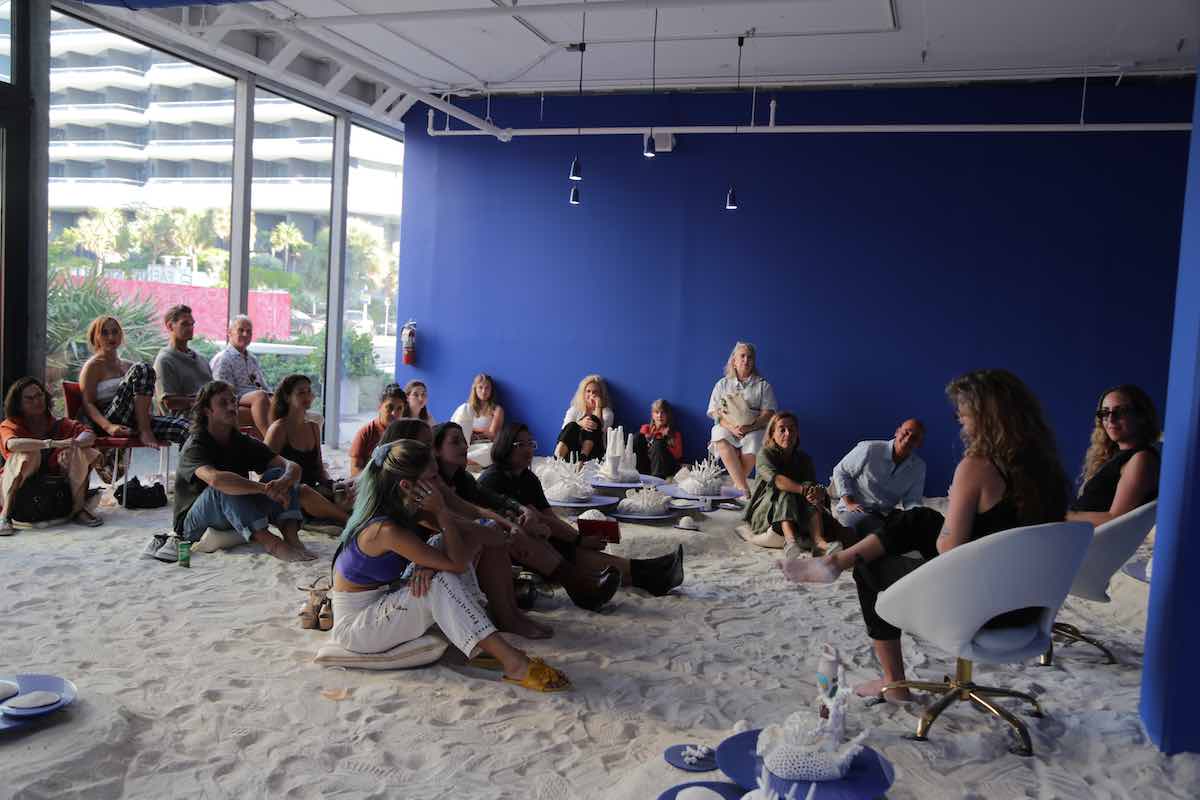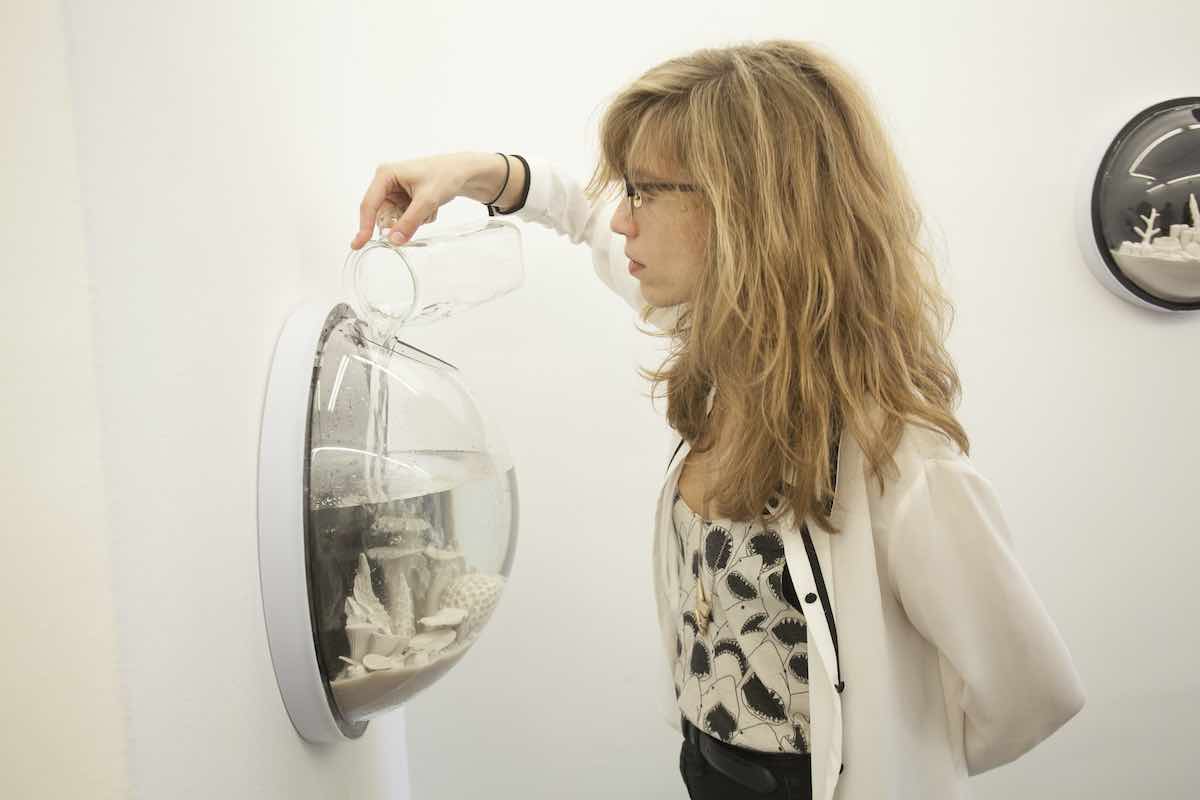
Coral, Clay And Conservation | Interview With Beatriz Chachamovits
Beatriz Chachamovits is an environmental artist and educator based in Miami, Florida. Using clay as her medium, Beatriz brings awareness to the dangers facing coral reefs worldwide. Her intricate coral sculptures capture the beauty of these underwater ecosystems whilst highlighting the devastating impact of human activities and climate change. This interview explores Beatriz’s journey fighting for these magical creatures, discussing her inspirations, challenges and successes.
Through Beatriz Chachamovits’s work, the gap between art and science is bridged, offering a deeper understanding of marine life. Her unique and provocative approach urges viewers to recognise the urgent need for action and to reflect on the role we all play in the decline of coral reefs.

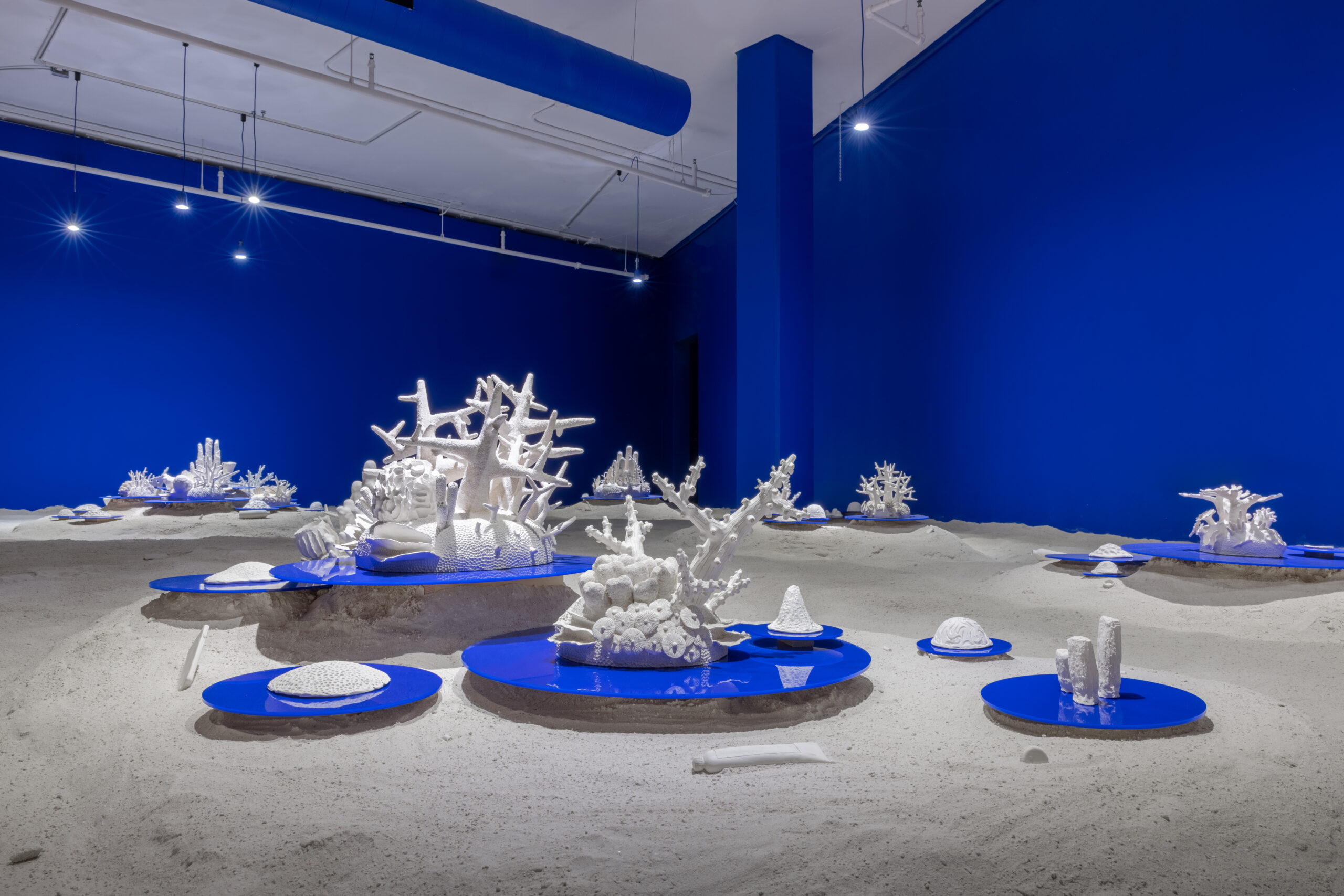
What is the current state of coral reefs?
The state of coral reefs at the moment is really dire. We are facing the fourth massive global bleaching in the entire globe. The world is losing its coral reefs faster than we ever imagined. There’s a lot to do and little time to do it.
What about Florida?
The situation in Florida is precarious. Since the 70s, we’ve been losing the thicket of the reef really fast. In some areas, we have around 2% of coverage left. Our reef here used to be 300 miles long and it’s just been hammered with diseases and problems nonstop.
There is an underwater epidemic called the stony coral tissue loss disease, which is a disease that infects the coral tissue and destroys and kills the coral colony in around four weeks, which is super fast. That disease started here in Miami in 2014. Since then, it’s been 10 years since this is ravaging the coral reefs here and it has expanded out throughout the whole Caribbean. But they have also been decimated because of rising temperatures in the water, because of the pollution runoff and nutrient runoff that we have here in Florida. Florida is really agricultural land and owned by the sugar farms and there’s no regulation for how much nutrients they put in the water. During the wet season, this chemical runoff is very problematic for corals.
We are in the first line of actually losing our reefs here. That’s one of the reasons why I moved here because I felt like I could actually do something about it. Last year we had a record temperature in the ocean, it was 101 Fahrenheit, the corals didn’t even have the chance to battle, they just died and it was horrific. It was on the news everywhere in the world. We lost at least 15% of the 20% of corals that we still had. Some of them started to bounce back around November but the mortality rate was huge. Scientists everywhere were scrambling to take coral species out of the ocean so that they could save them.
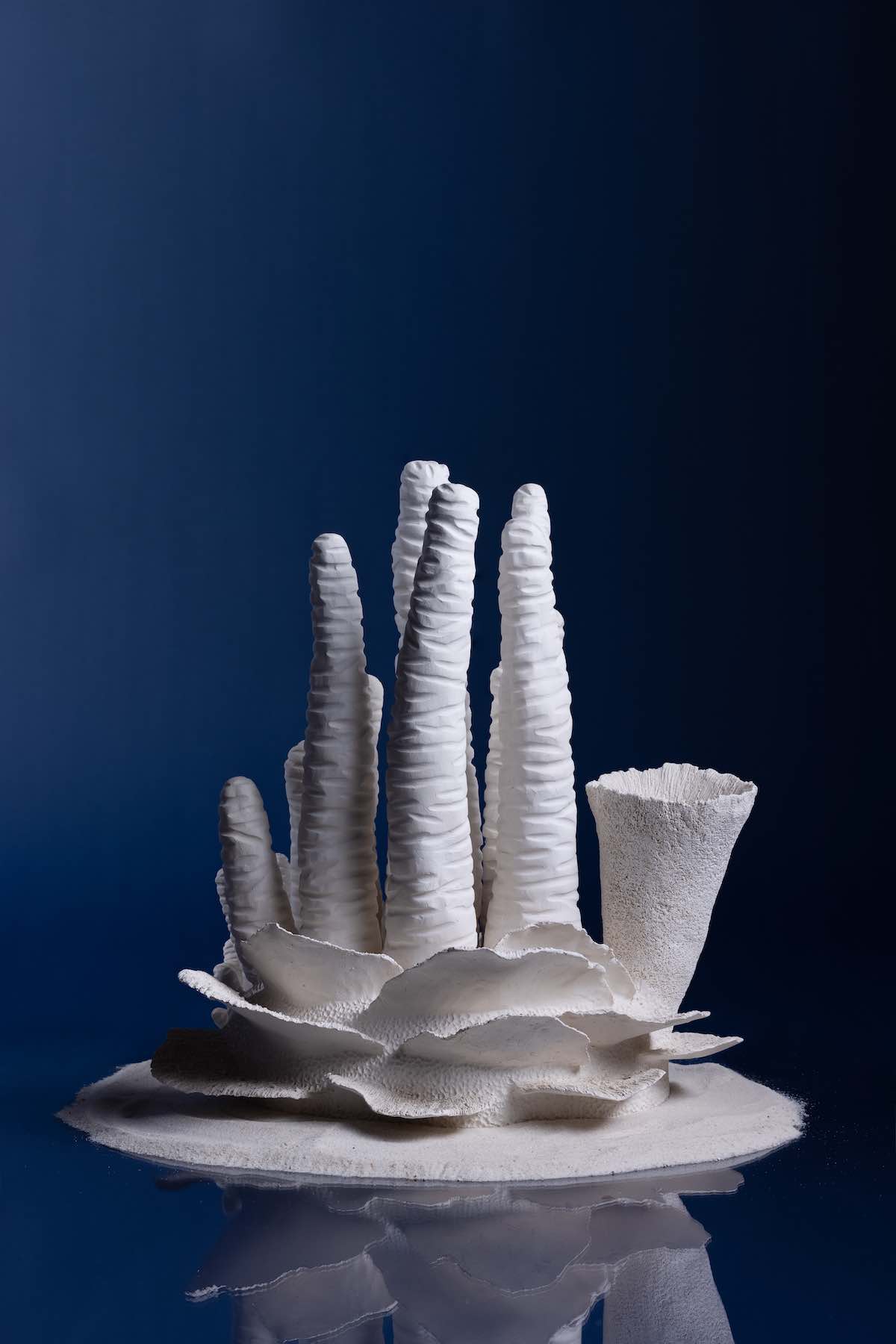
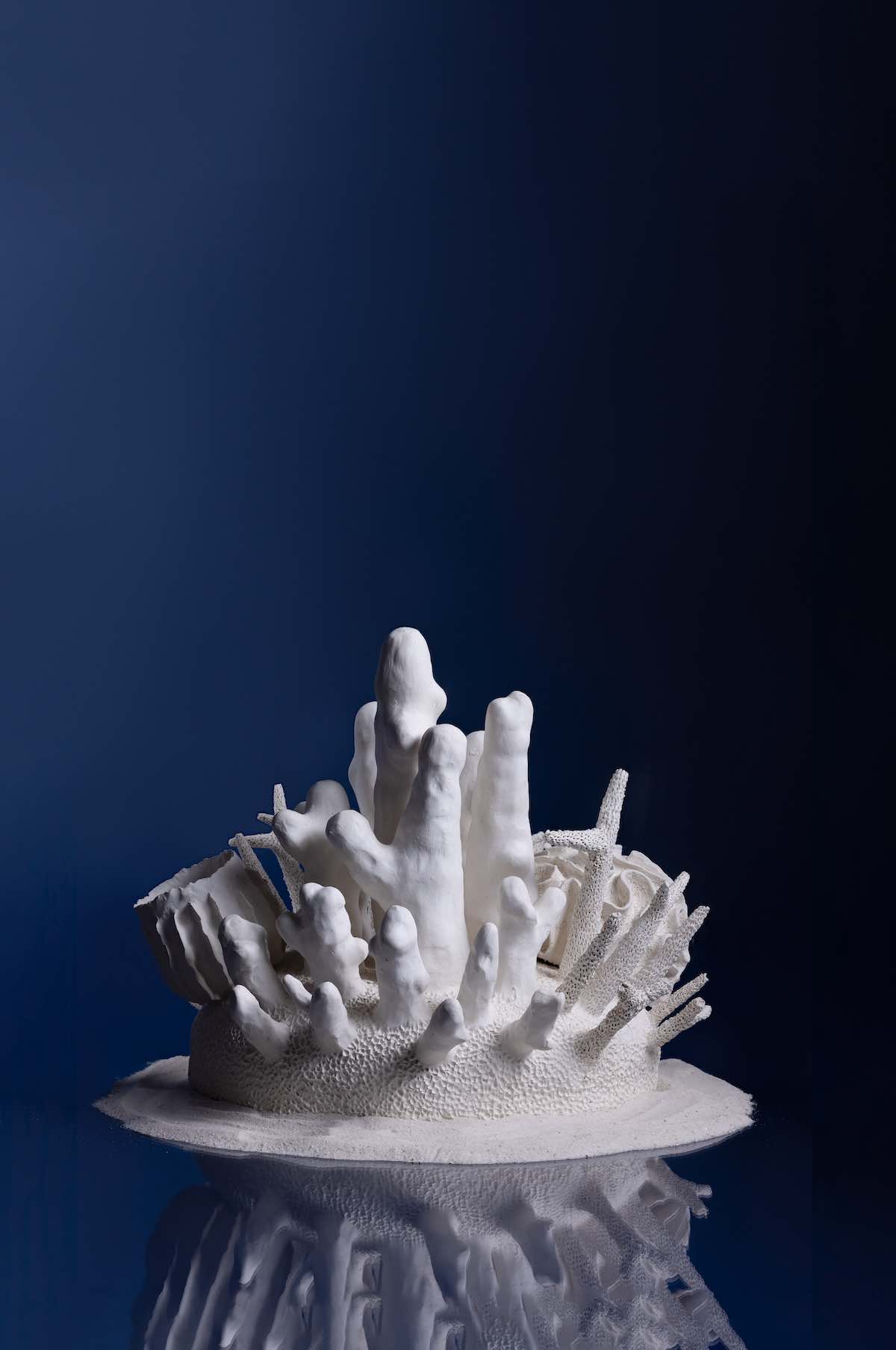

Was there a moment when you decided you were going to dedicate your life to the corals?
Totally. There was a magical moment in 2006 when I started talking about corals. I was in the northern part of Brazil in a state called Bahia and I was drawing algae and seaweed on the beach. This man approached me, and after seeing my drawings he took me to dive in a little cave that was completely covered with corals. The ceiling had openings so the sun’s rays would come in and reveal and obscure the colours, palettes and movements. I saw critters everywhere and tiny little silverfish swaying from side to side. There was this beautiful spotted Ray covered in sand in the bottom, and it was yellow and blue, and all these colours, just screaming in my face. And more so than that, the harmony, the precision of movement, the shapes, the form, the texture, everything about it was, it was just like, an explosion of love for me. That moment changed my life.
Once I left the ocean, I was like: Why isn’t anyone talking about this? I’m going to talk about this. And here I am almost 15 years later still talking about it.
What is your dream response to your work?
I want people to fall in love with the ocean, just like I did. You only care about things that you love. So if we don’t know it, if we can’t love and care for it then there is no positive outcome. My deepest hope is that people will be enchanted by it, just the way that I was. Then that enchantment will transform into love, love into care and care into protection and preservation.
Do you work a lot with scientists to understand the reef and alongside your exhibitions?
I started doing a lot of the research by myself because I didn’t know scientists, but as I moved to Miami I started to be more connected. I started to collaborate with them, ask questions and go deeper. I came to Key West to do an art residency for six months and I never left. I spent six months connecting with fishermen, marine enthusiasts and scientists and doing dives to discover and see the diseases and understand the death. That was the most hands-on time that I had in the ocean and it was instrumental for me to understand what’s happening here in Florida. Ever since then, I’ve been creating that connection with other scientists so that I can keep going.
Having scientific counterparts has been eye-opening to me in the way that I can communicate their research, or that I can communicate the problems of the reef, especially through my interactive installations. Having those conversations with them gave me a roadmap on how to create those installations. But the creation of the work itself I do myself.
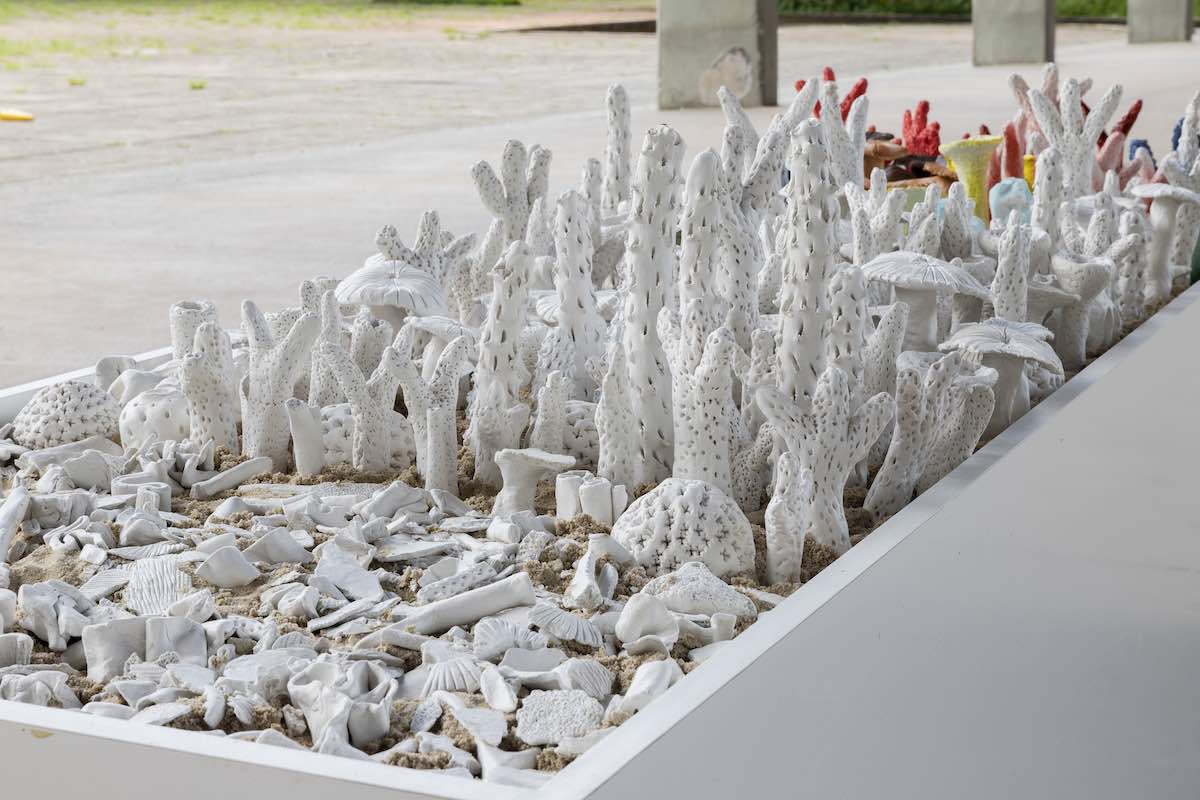
Can you tell me about your exhibition “Can You Sea Change”?
“Can You Sea Change” was a partnership between a couple of friends of mine and myself. One is a digital mapping artist, and her partner is a sound artist. The sound piece was Charlie, and he is part of DJs for Climate Action, and he also has connections within the Greenpeace sound library. So a lot of those sounds were a mix of sounds that he made plus actual sounds from the reef. Natasha is the digital counterpart of this equation. She created the image that is shown on the ceramic pieces. Some of them are actual footage from the reef, and some of them are code-generated images that she created. We show a cascading moment from a happy, thriving reef and then the reefs are heating up and dying. So the idea of this piece was for us to show the cycle of life and death that corals are facing because of us.
What about “Into The Great Dying”?
In 2022, I started this trilogy of interactive installations called Into The Great Dying. The Great Dying was the largest mass extinction that the planet has ever undertaken, where we lost around 90% of life on land and 70% of life and sea. It was 250 million years ago. The conditions that we are creating right now with the Anthropocene mirror the conditions of the planet at that time. So this series of exhibitions is to talk about the way that we’re behaving and what we can do about it.
The first one was called “Into The Great Dying: Steps We Take”. For that piece, I covered a gallery space that had two entrances with over 2000 unfired ceramic pieces of corals that mimicked the corals we have in Florida. I covered the entire floor with it and I invited people to enter the room and it was devastating. It was the most bizarre behavioural experiment I’ve ever done in my life. People destroyed the whole room in 30 minutes by walking on top of it. There wasn’t any space inside of the room that you couldn’t destroy. It was emotional for me to see four months of my work being destroyed in 30 minutes. It was the most incredible mirror I could have ever created to understand human behaviour and the acceleration of destruction, how we behave and how easy it is for us to destroy. It was intense.
Out of all of your exhibitions, what was the best reaction that you’ve ever had?
The one that moved me the most was after everyone destroyed everything in that room, there was this one girl about eight or nine years old that went around the whole room trying to find the pieces that weren’t broken and started building something with it. That’s why I teach kids. We’re leaving this planet for them. We need them to know what they’re getting and to be up to the task and to give that information to them. So that was easily the most incredible thing I’ve ever seen in my work.
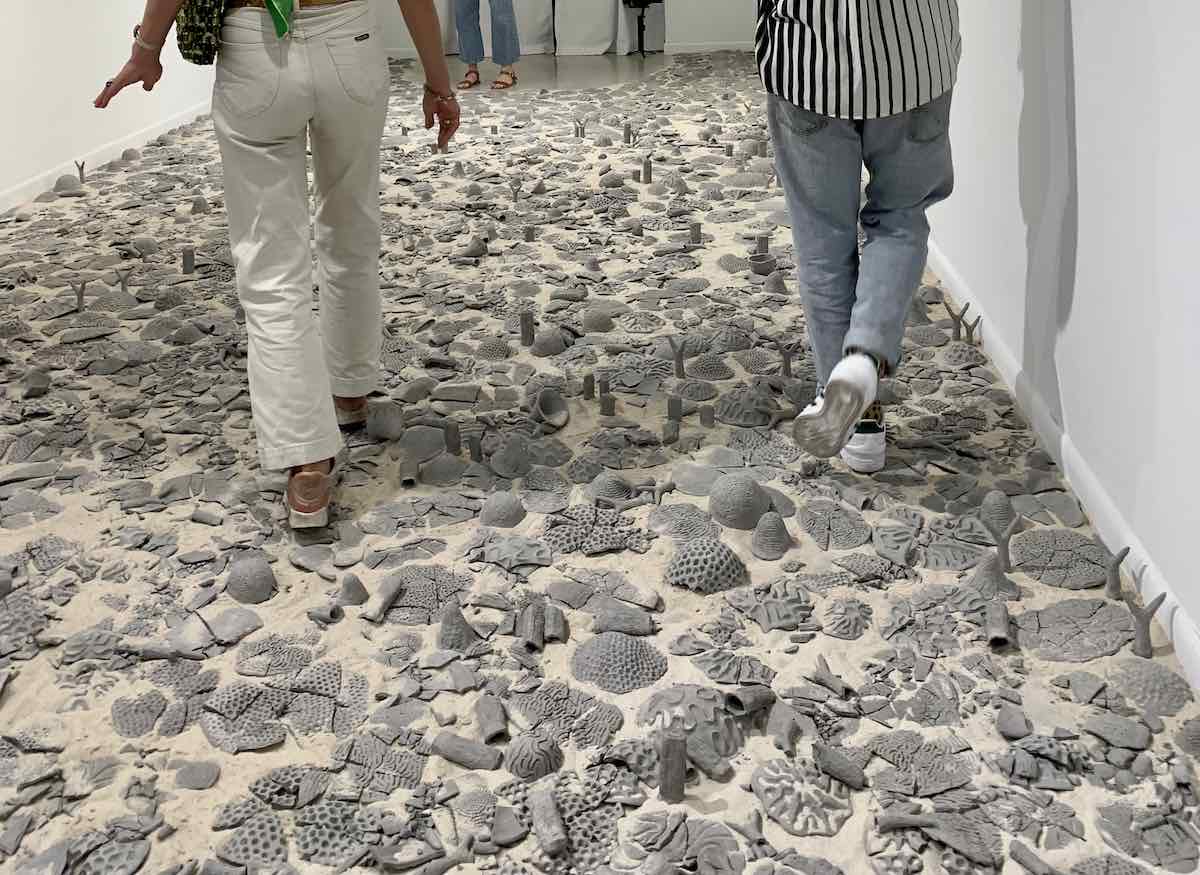
Is there a reason you always choose to work with clay?
Yes, there are many reasons. One, clay is just so magical to work with and it reminds me of the feeling that I had when I first met corals. Secondly, Clay emits the feeling of coral, in the sense that clay can be forever, but it can break in one second and that’s exactly what corals are. Every time we excavate we find pieces of ceramics from the history of humans everywhere in the world. So it can last forever but if you drop it it will break. But those little pieces will last forever. Clay and ceramics are one of the first mediums that we created as a human society in history. Corals are one of the first ecosystems that we’ve ever had in the ocean. So there are many connections as to why I use ceramics.
Before ceramics, my medium was drawing. Now I’m kind of going back to that.
Will your new project mix these mediums together?
Yes. So my new project is a mix of drawings and ceramics. But it’s a constitution of three new bodies of work. It’s really a punch in the face with colour. I’m leaving my monochromatic world and going into full-blown colour.
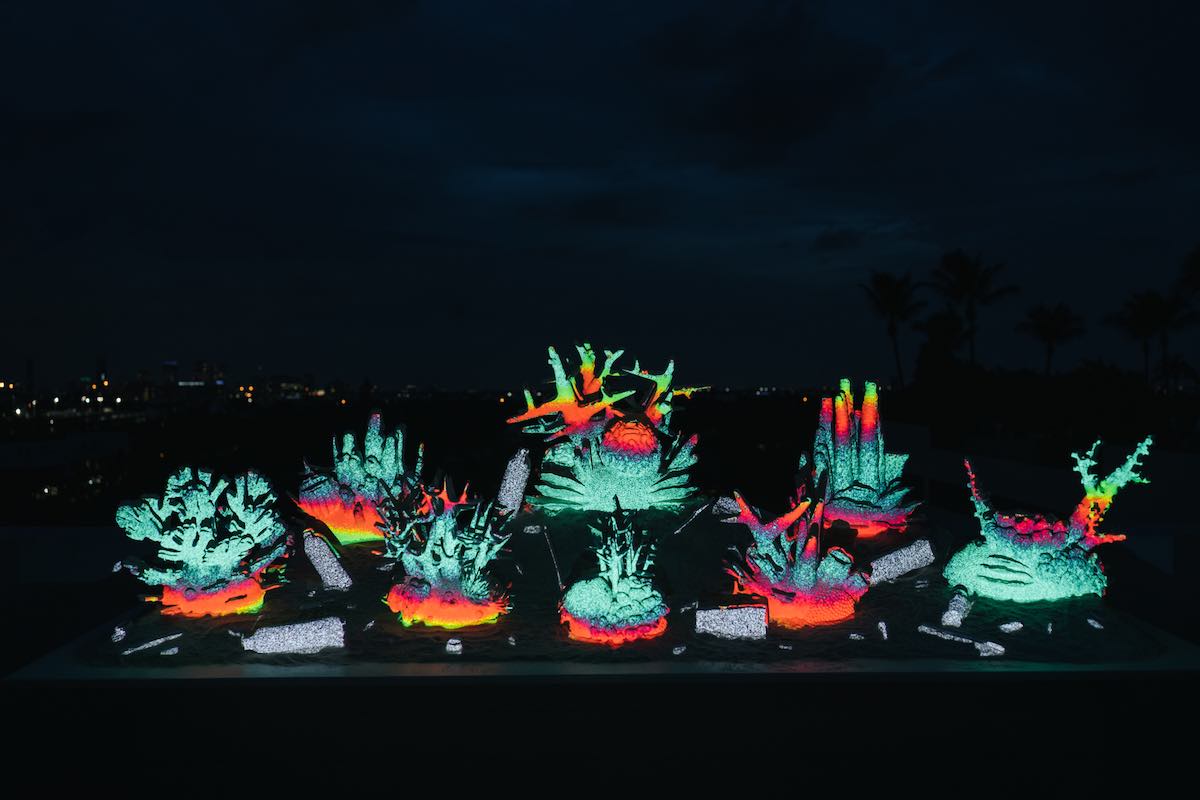
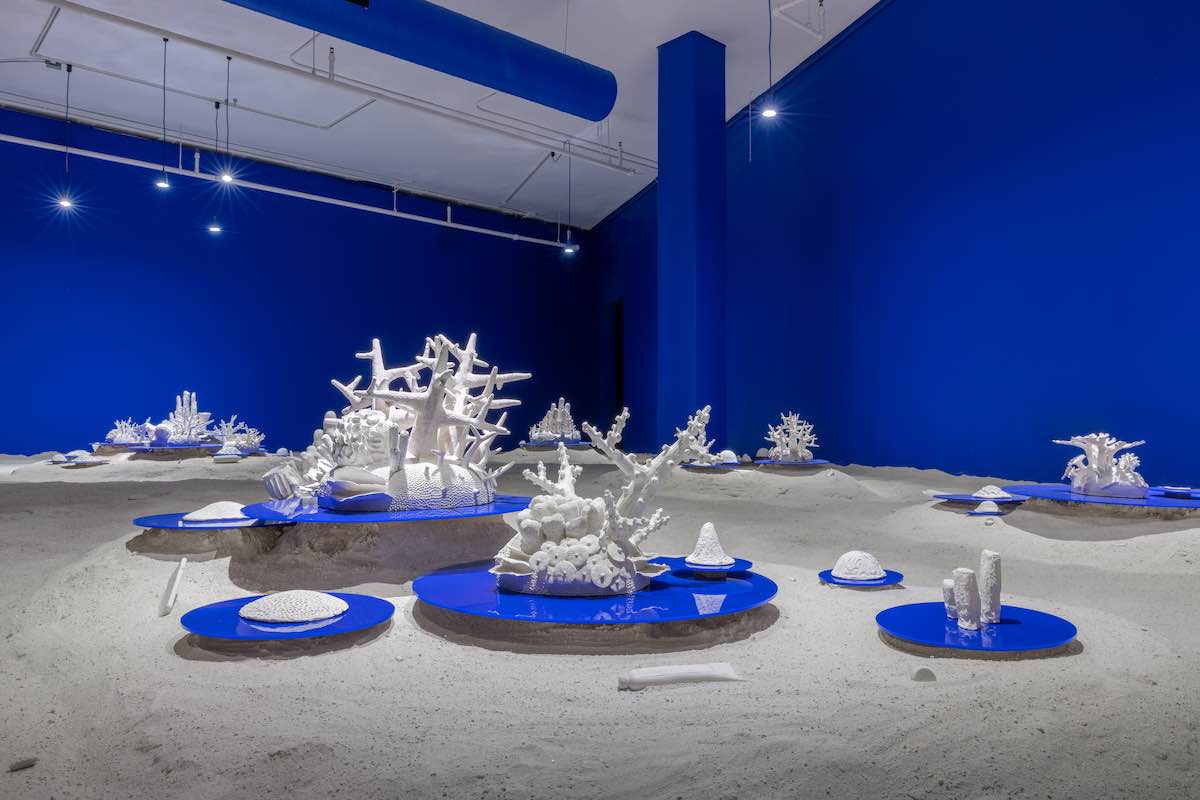
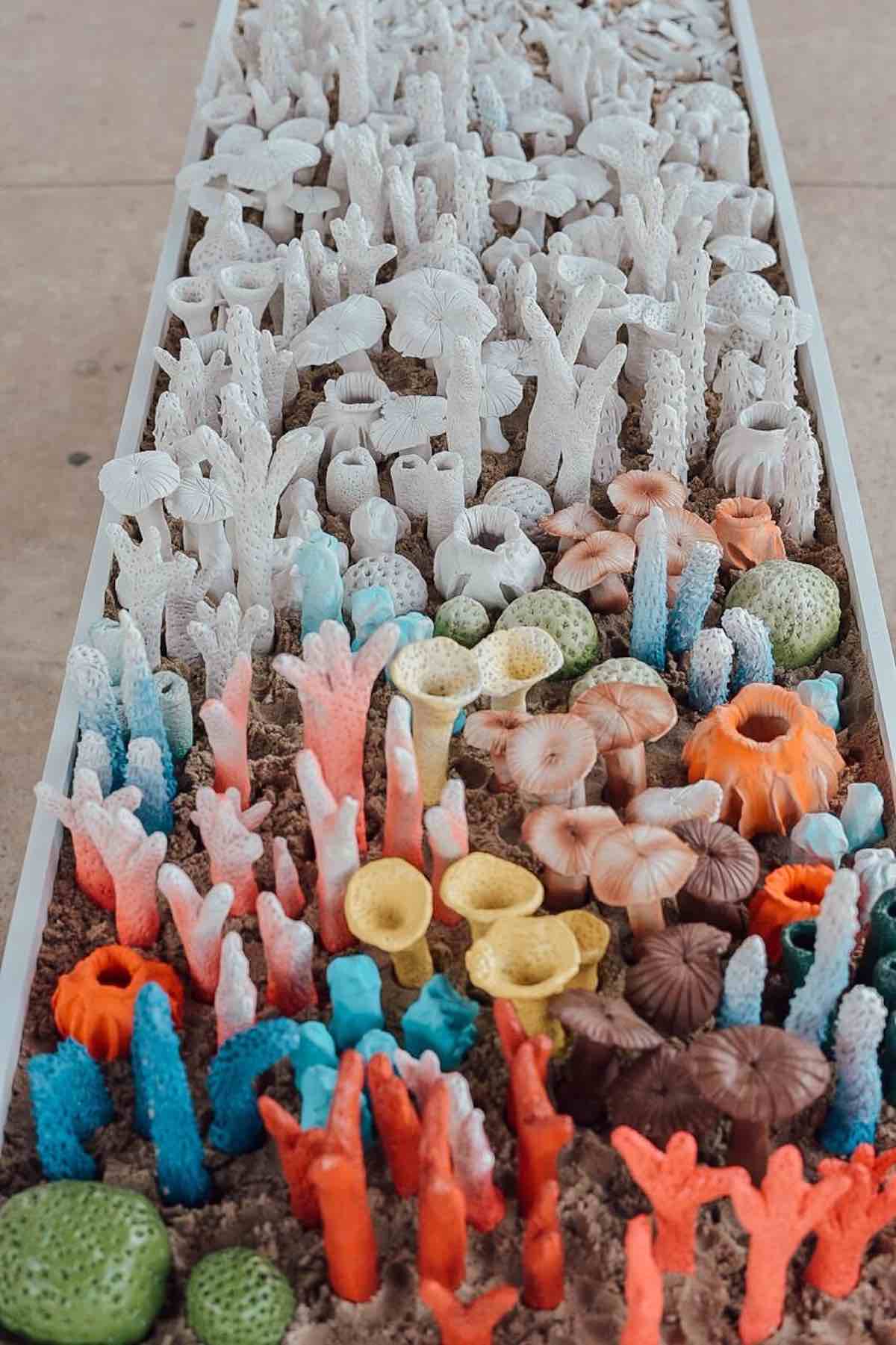
Do you find it difficult to stay positive about the state of coral reefs?
It’s really tough to stay positive, especially in the world that we live in today. We are looking at a world that is abandoning science and looking at their pockets and what’s beneficial for them. They’re not thinking about the longevity of the planet, people’s kids, breathing or having clean water. But I know a lot of really good people that really are doing something about it. Especially here in South Florida.
I’ve also been looking and talking about this in other places in the world and there is a rise of people wanting to do something about it. The worse we get, the more people I see wanting to act. So there is kind of a balance of optimism but right now I’m not in an optimistic mindset.
Do you have an idea of what you want people to start doing to help? Do you have solutions?
There is no roadmap for solutions. The thing about coral reefs is that the solution is not onefold because it takes everyone to do it. One of our biggest powers is consumption, how we use our money and where we’re putting our money. That is number one for individuals, but this problem is not an individual problem. This problem is a societal problem. It’s a problem with the sugarcane factories, it’s a problem with the government. It’s a problem with industrialisation as a whole. It’s a problem of how we lead our world and it’s not an easy thing to change. That’s why it’s so complicated.
There are tiny things that we can do to feel like we’re contributing, but what we really need is leaders who really understand that this is a problem. So a lot of the solution comes from us understanding that this is bigger than ourselves and asking for help and also requiring the people that are in power to do so as we need. Because we need to have a planet there you know, and without the ocean, there is no planet.
Do you have challenges with communicating this to people and with your use of clay?
Of course. Clay is super challenging. You have to be so detached because it requires so much commitment and decision and then you can lose it in a second. But it can also go into the kiln and come out as something incredible. So in ceramics, you need to deal with the fact that all of the effort that you’re putting into this single piece might not be what you actually want it to be. But that has also a lot to do with the way that things are going in the world. There are so many metaphors and overlapping ideas of societal progress in the way that you work with ceramics.
It’s an important part of my practice. I have laid out pieces for people to destroy, I have dissolved my structures. I have put sculptures inside of water and they dissolve throughout the exhibition to talk about ocean acidification. So I’m really prone to destroying my work. It doesn’t faze me when things like this happen. I do that to myself because that’s what we’re doing to the planet.
